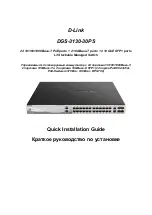
Advanced functions of the device
14.2
DHCP L2 Relay
224
UM Config GRS
Release
8.0
09/2019
14.2
DHCP L2 Relay
A network administrator uses the DHCP Layer 2 Relay agent to add DHCP client information. This
information is required by Layer 3 Relay agents and DHCP servers to assign an address and
configuration to a client.
When a DHCP client and server are in the same IP subnet, they exchange IP address requests and
replies directly. However, having a DHCP server on each subnet is expensive and often impractical.
An alternative to having a DHCP server in every subnet is to use the network devices to relay
packets between a DHCP client and a DHCP server located in a different subnet.
A Layer 3 Relay agent is generally a router that has IP interfaces in both the client and server
subnets and routes traffic between them. However, in Layer 2 switched networks, there are one or
more network devices, switches for example, between the client and the Layer 3 Relay agent or
DHCP server. In this case, this device provides a Layer 2 Relay agent to add the information that
the Layer 3 Relay agent and DHCP server require to perform their roles in address and
configuration assignment.
The following list contains the default settings for this function:
Global setting:
–
Active setting: disable
Interface settings:
–
Active setting: disable
–
Trusted Port: disable
VLAN settings:
–
Active setting: disable
–
Circuit ID: enable
–
Remote ID Type: mac
–
Remote ID: blank
14.2.1
Circuit and Remote IDs
Before forwarding the request of a client to the DHCP server, the device adds the Circuit ID and the
Remote ID to the Option 82 field of the DHCP request packet.
The Circuit ID stores on which port the device received the request of the client.
The remote ID contains the MAC address, the IP address, the system name, or a user-defined
character string. Using it, the participating devices identify the relay agent that received the
request of the client.
The device and other relay agents use this information to re-direct the answer from the DHCP relay
agent to the original client. The DHCP server is able to analyze this data for example to assign the
client an IP address from a specific address pool.
Also, the replay packet of the DHCP server contains the Circuit-ID and the Remote ID. Before
forwarding the answer to the client, the device removes the information from the Option 82 field.
Содержание GREYHOUND GRS1020
Страница 8: ......
Страница 16: ......
Страница 146: ......
Страница 232: ......
Страница 310: ......
Страница 330: ......
Страница 338: ...Readers Comments 337 RM GUI GRS Release 8 0 09 2019 ...
Страница 339: ......
Страница 340: ......
Страница 350: ......
Страница 354: ......
Страница 617: ...Readers Comments 277 UM Config GRS Release 8 0 09 2019 ...
Страница 618: ......
Страница 619: ......
















































